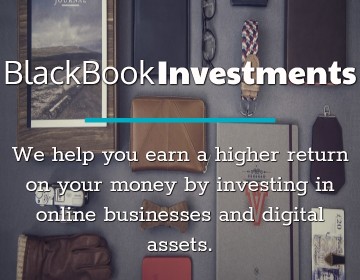
There are a lot of challenges and obstacles for entrepreneurs. Even if you have a product, service, or other viable money-making idea, turning that idea into profit can be a convoluted and challenging process.
One of the ways that a lot of entrepreneurs struggle is to find appropriate and reasonable funding. Banks and traditional lenders can be quite short-sighted when it comes to offering loans and other forms of capital funding to entrepreneurs, especially if they do not have assets or filled order books.
However, the modern business arena has changed, and thanks to innovations like blockchain, cryptocurrency, AI, and crowdfunding, the modern entrepreneur has access to lots of different funding sources.
Table of Contents
Cryptocurrencies
Cryptocurrency continues to gain in popularity and there are now more than 17,000 coins and tokens. Entrepreneurs with experience in finance can invest in some early stage crypto gems that, according to crypto content writer Kosta Kostadinov, have the potential to offer returns in multiple orders of magnitude. Cryptocurrency investment is high risk, and there are no guarantees of success, but this isn’t the only way to potentially use crypto as a form of funding.
For entrepreneurs with active communities, fan tokens, and governance tokens can raise much-needed capital. For those with marketing or social media chops, meme coins can raise substantial sums on their release. And, some entrepreneurs can turn cryptocurrency into a solid business idea.
Cryptocurrency requires a lot of research, and while it does take knowledge to launch blockchains, some services make the launch of meme coins and other tokens very easy.
DeFi Lending
Cryptocurrency is a form of Decentralized Finance (DeFi) and while it is the one that most people have heard of, there are other alternatives. DeFi lending platforms act as intermediaries between crypto borrowers and lenders.
DeFi Lending works in a similar way to secured credit. The borrower uses money to buy cryptocurrency or other crypto assets. When the loan comes to term, the lender gets their initial investment plus the agreed rate back, and the borrower gets to keep what’s left over. Effectively, this is a form of investing in cryptocurrency without having to stump up the initial investment.
While it can generate capital for entrepreneurs, the money borrowed will be tied up in cryptocurrency until the end of the loan term. And there is always the potential that the cryptocurrency asset can drop below the value of the collateral and the fee. In this case, the borrower ends up losing money.
Tokenized Products And Services
It is possible to tokenize virtually anything and create a public record of it on established blockchains. Non Fungible Tokens (NFTs) have proven especially popular and are digital collectibles.
If you create art, music, or anything else that can be stored digitally, you can attach them to NFTs, which are minted on the blockchain, and then trade them on NFT marketplaces. While this is selling your own products or services, because everything is completed digitally, it offers much quicker access to funds than through physical transactions.
Micro Investments
A micro-investment offers a small share of a venture in exchange for a relatively small amount of cash. This type of borrowing isn’t necessarily new. Some financial institutions and angels specialize in offering micro-investments to entrepreneurs and businesses.
However, blockchain and crowdfunding platforms have seen the introduction of community-driven micro-investments. The investor will receive tokens, equivalent to shares in the venture, in exchange for relatively small sums of money, typically around $100.
Investors can buy multiple tokens and may be given voting or other rights in line with the token. This can be an effective way of monetizing a loyal community, but the entrepreneur needs to bear in mind that they can lose the goodwill of their community if the investment backfires.
Crowd Funding
Crowdfunding sites like Kickstarter have become massive. While Kickstarter is quite a general platform, enabling investors to invest in businesses and ventures of virtually all types, there are specialist platforms.
Gamefound is a crowdfunding site dedicated to gaming. Artist Share is targeted at artists and musicians. Using these specialist sites can yield great results because the potential investors have knowledge and an interest in the specific type of product or service the entrepreneur is offering. There may also be less competition than on the bigger sites like Indiegogo.
Grant Matching
Grants are not innovative or new. Governments and other bodies have been offering grants to individuals, businesses, and groups that meet certain criteria for generations. However, a lot of these grants are not publicized. While a lot of people know of research and development grants, only a select few people may be aware of some of the more specific grants being offered.
One way to help identify and even apply for these grants is using artificial intelligence. AI can match businesses and entrepreneurs with appropriate financial aid. It can also help the entrepreneur meet the required criteria and assist in the application process.
AI-Driven Funding
One of the drawbacks of traditional funding is that it is slow. It can take weeks to progress through the application process, and even longer for the lender to make a final decision on whether they will provide the requisite money.
This is another area where modern AI can assist the entrepreneur, although indirectly. Some lenders use AI to help them assess risk and determine the value of investments. These lenders are usually able to make much quicker decisions than traditional lenders, making them a more beneficial source of loans and other funds.
Customer Prepayments
For entrepreneurs who already have good reputations or have developed strong relationships with an existing client base, customer prepayments can generate much-needed income. This effectively means borrowing from yourself.
Offer discounts or value-added services to clients, in exchange for the prepayment of their invoices. Not all customers are willing to prepay, but this can be an especially effective tool coming up to year-end.
Some businesses will have leftover budgets or might be looking for ways to further offset their tax liabilities for the year. For a 10% reduction in price, they might be willing to prepay for products and services and provide the funds a business needs.
Invoice Factoring
Another way of borrowing from yourself is through invoice factoring. This is also known as debt factoring or invoice financing. Essentially, a business or entrepreneur can sell their unpaid invoices to third parties. When the invoice comes due and the customer pays, they make the payment to the third party.
You are effectively borrowing against the value of your invoices and there are pros and cons to the service. You do pay for the privilege and will typically give between 10% and 20% to the third party, but it can be an effective way of quickly generating a cash injection.
Conclusion
Raising funds can be difficult for entrepreneurs. If you don’t have an existing business, assets to leverage, or a trading history with the bank, traditional funding may be out of the question. But, there are many other ways to raise capital, especially in the modern age.
In some cases, like AI-driven grant identification, this means using modern technology to assist in traditional funding methods. In other cases, such as the creation and sale of crypto tokens, it means using very modern techniques.

